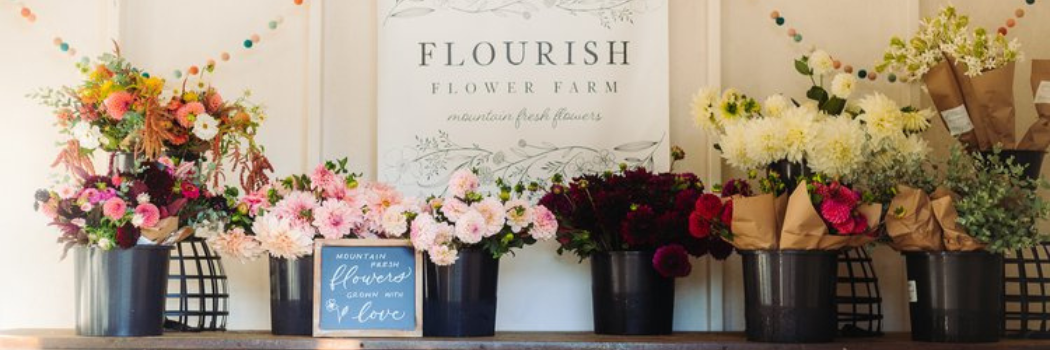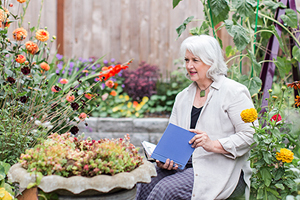- 3 Easy, Reliable, Productive Cut Flowers: Sunflowers, Zinnias & Rudbeckia
- 5 Factors That Determine Vase Life of Cut Flowers
- 2019 American Flowers Week: Combining the Art of Floral Design & Couture
- Celebrate the 7th American Flowers Week | Johnny's 2021 Botanical Couture
- Celebrating the 8th American Flowers Week | Johnny's 2022 Botanical Couture
- Collective Selling Models for Flower Farmers: Flower Hubs That Work
- 5 Cool Flowers to Plant Now | Lisa Mason Ziegler's Secrets for Growing Hardy, Cool-Season Annuals
- Cut-Flower Harvesting & Post-Harvest Care | Best Practices from Pros in the Slow Flower Community
- Cut-Flower Kit | Guide for Market Growers (PDF)
- Easy Cut-Flower Garden Map | For Growers New to Flowers (PDF)
- Easy Cut-Flower Garden Planner | For Growers New to Flowers (PDF)
- From Color to Climate: 5 Floricultural Trends Subtle & Seismic
- Flower Culture by Crop | Comparison Chart | Days to Germination, Weeks to Transplant, Days to Harvest (PDF)
- Flower Farmers' Favorite Fillers & Foliage | Recommendations from 3 Farmer-Florists
- Getting Started in Cut-Flowers | Top 15 Cuts
- Heat & Drought: How Flower Farmers Are Adapting to Changing & Challenging Climatic Conditions
- Introduction to Overwintering Flowers | Guide to Overwintering Flowers
- An Introduction to Producer Marketing Cooperatives | M Lund & Associates
- How Day Length Affects Cut-Flower Production
- Growing Flowers in Hoophouses & High Tunnels: Cool-Weather & Hot-Weather Options
- Starting a U-Pick Flower Farm, From A-to-Z
- Growing Flower Seedlings for Profit
- Roadside Flower Stand Basics: Success Tips for On-Farm Retail
- Year-Round Flower Production Strategy
- Overwinter Flower Trials | Multiyear Results for 30+ Crops | Johnny's Selected Seeds | XLSX
- Seeding Date Calculator | Johnny's Recommended Flowers for Overwintering | XLSX
- Pricing & Profitability for Flower-Farmers | Pointers from a Diversity of Pros
- Sustainable Farming Methods | A Survey of Flower Farmers' Best Practices
- Just Add Flowers | An Introduction to Companion Planting for Vegetable & Herb Gardeners
- Slow Flowers Palette & Petal Crushes | Evolving Colors & Shape-Shifts in Floral Industry Trends
- Johnny's and Slow Flowers | Johnny's Selected Seeds
- Slow Flowers | Celebrating Fifth-Season Regional Design Elements
- Slow Flowers Floral Forecast | A Summary of Industry Insights & Trends
- Building a Better Market Bouquet: Tips, Techniques & Recipes for Flower Farmers
- Slow Flowers | Tips for Staging On-Farm Floral Workshops | Johnny's Selected Seeds
- Wedding Wisdom 101 | 10 Beginner Tips for Entering the Wedding Floral Landscape
- Succession-Planting Flowers | Scheduling & Planning, Sowing Frequency, Recordkeeping & Recommendations
- Succession-Planting Interval Chart for Flowers
- Sustainable Floral Design | Techniques & Mechanics for Foam-Free Floristry | Tobey Nelson & Debra Prinzing
- Video: Mason Jar Bouquet Tutorial
- Video: How to Build a Bouquet
- Video: Tobey Nelson | Sustainable Floral Design | Slow Flowers Summit
- Video: Economic Considerations in Overwintering Cut Flowers | Johnny's Selected Seeds
- Top 10 Cut-Flower Varieties for Direct Seeding
- Video: Floating Row Cover | Baby "Cool Flower" Protection from Whipping Winter Winds
- Video: The Procona System for All-in-one Flower Harvest, Transport & Display
- Johnny's Overwinter Flowers Tunnel: Trellising, Supports, Ground Cover & Spacing
- Video: Irrigation Considerations for the Overwinter Flowers Tunnel | Johnny's Selected Seeds
- Video: Johnny's Overwinter Flowers Trial Recap
- Video: Producer Cooperatives for Small-Scale Farmers | Johnny's Webinar Series
- Climate Adaptation for Vegetable & Flower Farmers | Johnny's Educational Webinar Resources
- Chrysal CVBN Flower Conditioner | SDS
- Webinar Slide Deck | New-for-2023 Flowers & Floral Supplies | PDF
- Chrysal Clear Bulb Flower Conditioner | SDS
- Chrysal Professional 2 Transport & Display T-Bag | SDS
- Chrysal Classic Professional 2 Transport & Display (Holding) Solution | SDS
- Chrysal Clear Universal Flower Conditioner | SDS
- Webinar Slide Deck | Flower Growing in Southern States | PDF
- Choosing Flower Crops to Overwinter | Guide to Overwintering Flowers
- Edible Flowers List: Top 20 Favorites from the Slow Flowers Community
- Floral Standards for Flower Farm Collectives and Cooperatives
- Bloom to Boom: Flower Farm Profitability
- Choosing Tulip Varieties for Forcing | Guide to Forcing Flower Bulbs
- Forcing Tulip Bulbs | Guide to Forcing Flower Bulbs
- Snapdragon Groups Explained
- Flowering in the South: Profiles of 5 flower farmers who cope with temperature, humidity, pest & weed pressure
- Video: Flower Growing in Southern States | Johnny's Webinar Series
- 10 Tips for Building a Profitable Cut-Flower Business
- Introduction to Forcing Flower Bulbs in Soil | Guide to Forcing Flower Bulbs
- U-Pick Power for Your Flower Farm | Johnny's Webinar Series
- Eat Your Flowers: Serve Up That Wow Factor With Edible Flowers
- U-Pick Power for Your Flower Farm | Johnny's Webinar Series
- Flower Growing in Southern States | Johnny's Educational Webinar Series
- Chrysal Clear Bulb T-Bag | Cut-Flower Conditioner | SDS
- Chrysal Professional 1 Hydration Solution | SDS
- Chrysal Professional 3 Vase Solution Powder | SDS
- When to Start Seeds for Overwintered Flowers | Guide to Overwintering Flowers
- Webinar Slide Deck | U-Pick Power for Your Flower Farm | PDF
Tips for Building a Profitable Cut-Flower Business
By Debra Prinzing, Slow Flowers Society, February 2024
On This Page
Ten Tips To Measure Profitability: We Unpack the Many Ways Flower Farmers Track Costs and Income
There’s an explosion of flower farming, propelled by increased demand from florists and consumers eager for healthy, fresh, seasonal, and locally-sourced botanicals. The impressive number of people entering floral agriculture also can be explained by relatively low entry-costs to get started as a flower farmer, whether they are planting a backyard cutting garden or opening a micro flower farm.
And just like that, many gardeners and growers become owners of a small agricultural business—floral enterprises that need tending and nurturing, along with the sunflowers, zinnias, and cosmos. For many beginners, it’s exciting to experience the reward of growing beautiful flowers. Selling bunches and bouquets to neighbors, friends, and farmers’ market customers is just the start. Then comes one of the most challenging parts of flower farming: Figuring out which crops make money and (sadly) which ones might be less lucrative.
In her seventh season, Utah-based flower farmer Heather Griffiths of Wasatch Blooms, sums up the sentiments of most new growers. “During the first couple years, you’re just excited to be farming. You think, ‘Oh, my gosh—somebody bought my flowers!’ But after a few seasons, you start looking at your numbers and asking ‘Am I actually making anything?’ Flower farmers should be paying attention to pricing and look into it deeply to understand the value of their flowers.”
About the Survey Data
In the 2024 Slow Flowers Survey, we included a few questions to gauge how our members understand crop pricing and profitability. We asked farmer-florist Lennie Larkin, owner of B-Side Farm in Warrenton, Oregon, for her input to develop the survey questions. As a grower, business coach and researcher, Lennie is on a mission to help farmers be successful in their cut flower businesses. She wrote her new book, “Flower Farming for Profit,” as a resource for anyone who grows flowers.
Most respondents (63%) say they don’t aim for specific net sales margins. They ranked learning more about flower farm efficiency (75%) as the knowledge most needed.
These insights show that there’s a desire among farmers to have better control over factors and variables that influence profitable flower farms.
Digging Deeper: Ten Tips for Profitability on Your Flower Farm
To dig deeper on this topic, I spoke with four Slow Flowers members, including Lennie and Heather, to learn about their practices and strategies, collecting 10 tips for you to employ on your farm.
Also sharing advice is Niki Irving, owner of Flourish Flower Farm in Asheville, North Carolina (and author of “Growing Flowers,” Mango Press, 2021) and Janis Harris of Harris Flower Farm in Saint Thomas, Ontario, Canada.
1. Track Labor Costs
Admittedly, labor is hard to track. The reality is most flower farmers are multitaskers, Lennie says. “We’re doing a million things all at once; it’s just the way we manage and it’s often to our detriment. It’s a challenge to know what time you spent on what crop and what activities are in support of those crops.”
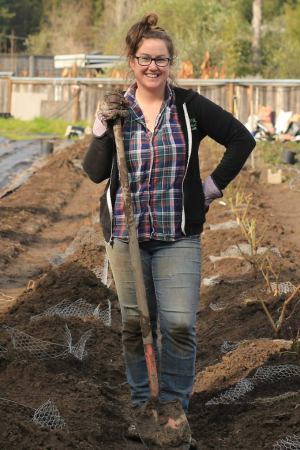
Lennie uses a crop costing program called “Know Your Costs to Grow,” developed by the OSU Center for Small Farms in collaboration with Oregon Tilth and advisor Tanya Murray.
“Rather than timing every minute you spend on your bed of zinnias over the year, you take samples of your time,” she explains. “It leverages the fact that a lot of our farming activities, like weeding, will take the same amount of time, no matter whether it’s for dahlias or zinnias. You can time yourself doing the activity for one crop and then apply it to other crops.” On a few occasions during the course of a season Lennie times herself and crew members as they weed or perform any other activity on the farm. Based on how long it takes to weed a full bed or a square foot area, she calculates labor costs per unit. It’s not surprising to discover that the time spent per 100-foot row is likely to be similar regardless of the flower crop. “Once you have a baseline, you have something to measure against,” she points out.
Click here to download Lennie’s free tool to calculate labor costs.
Labor definitely factors into the bouquet-making process, says Janis Harris. “You have to be fast,” she insists. “We’re selling mixed bouquets for $9 wholesale to the grocery store; they aren’t big and don’t have a lot of ingredients. So, we’re not spending five minutes to make each one. I timed it and if I have all the stems ready, I can make 15 bouquets in 17 minutes.” And while she isn’t currently paying herself (due to her recent move from leased land to starting over again with the purchase of her own farm two years ago), Heather still calculates the cost of her own labor along with her employee labor.
2. Know Your Inputs
If you know how much compost you ordered for the year, for example, it’s useful to calculate the average amount spent per bed, row, or crop. “If you know the overall cost of what you bought and how you used it across your planting beds, you can estimate that average,” Lennie advises.
At Flourish Flower Farm, Niki Irving says she focuses on “big picture” expense numbers. “I’m always reviewing at the end of the year, looking at my costs of goods sold, payroll, expenses, and profit. Our accounting sheet is the telltale tool of what I’m spending on seeds, plugs, and supplies.” When it comes to income Niki tracks individual sales channels, including farm stand sales, florist sales, DIY buckets, online store sales (bouquets and bulbs), wedding designs, workshops, and guest teaching. She calculates cost of goods sold for each category. “This gives me a sense whether a crop is costing me more to grow. For example, I don’t grow lisianthus anymore, because it’s labor intensive and it blooms at a time where there isn’t much demand, so I can’t charge enough to make it worth to grow.” At Wasatch Blooms, Heather uses a spreadsheet to track all of her inputs and sales. She itemizes the costs of plugs, corms, seed, plants, compost, drip tape, landscape fabric—plus labor.
“I look at what I actually harvested versus what I thought I was going to harvest to figure out which crops are profitable. That’s how I learned that statice is not profitable for me."
3. Evaluate & Refine Sales Channels
Once you know who is buying your flowers, you can also evaluate the costs through each channel. “Rather than saying, ‘I made $2,000 at the farmers’ market this past Saturday,’ you might want to ask how much you spent to sell there,” Lennie notes. “If it requires eight hours of labor for two employees, including set up, delivery, and tear down, you might not be coming away with as much money you think you are by merely looking at the top line revenue.”
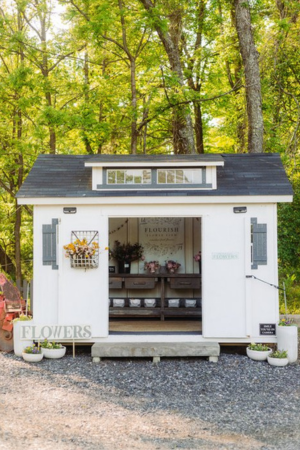
Your evaluation may reveal which channels, such as CSAs, are less profitable, Lennie points out. Growers often cite the fact that their product is ‘pre-sold’ (and therefore provides up-front income) as the advantage of selling CSA subscriptions. “That might sound great, but if we’re talking about a small farm with just five or 10 subscribers, how far is that money going to carry you through the winter?” Lennie asks. “Unless you can scale a CSA, it might not serve you well to continue that program.”
She argues that many farms are overdiversified, as growers try to sell through as many channels as possible. Lennie learned this lesson first-hand. “When I sold to so many people, I wasn’t investing in those relationships. I wasn’t seeing if I could sell them more flowers each week or more flowers throughout the season.”
Rather than the shotgun approach, Lennie channeled more of her energy into building a successful farm stand at her prior location in Sonoma County, California. “My farm stand brought in $125,000 a year—which is a huge number for a tiny shack on the side of the road.” Observing and evaluating sales taught Lennie to stock fewer flowers on Tuesday because it was a slower day, while instead developing wholesale channels to move product harvested early in the week.
4. Use Bouquet Recipes to Control Costs
It’s tempting to channel your inner florist and create the prettiest and most unique market bouquets ever seen. But these are unlikely to be the most profitable, Lennie says. “We have dialed in how to be fast and efficient, and also to use a combination of ingredients that have a higher perceived value.”
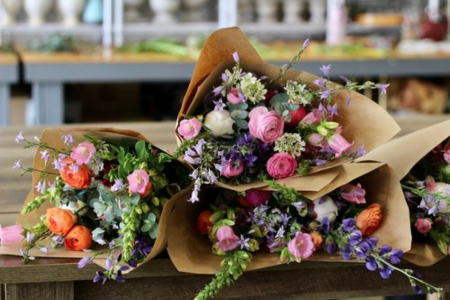
Her best-selling bouquets include one to two types of focal flowers; one to two types of branching filler flowers; one type of greenery; and one ephemeral element. This combination creates enough space, airiness, and contrasting shapes and textures to make a beautiful bouquet with perceived value.
“I got to the point where I didn’t need to write down extensive recipes, nor was I slowing down to calculate costs while making the bouquet. I know my wholesale price of stem—from 50-cents to a few dollars each—and then I count in my head as I add bouquet ingredients. I stop when I hit $10 because I want to sell the bouquet for $30.”
At Flourish Flower Farm, Niki plants with her bouquet recipe and design clients in mind, which helps her allocate costs per sales channel. “I want to grow focal flowers, secondary or supporting flowers, and ingredients for line, filler, foliage and whimsy. I keep a crop planning spreadsheet that helps me hit all of those categories each month during the season.” Janis Harris grows 10 acres of cut flowers in Ontario, serving local customers through subscriptions, a farm stand, and weddings. She controls flower costs in some instances by buying flowers from other growers. “It’s a better idea for me to buy snapdragons from another grower with a huge greenhouse operation, because he grows them all year at a better price.”
5. Tailor Record-Keeping
By looking at what your plants actually yielded and comparing that to what you sold, you can learn what percentage of your flowers you don’t have outlets for, Lennie suggests. “This information might tell you something amazing, like that you only need to plant half as much of one crop in order to meet the demand you have for it.”
One of the tools Niki uses at Flourish Flower Farm is to run a QuickBooks report for each flower. “I can see what was the most profitable flower, just in terms of sales channels. The numbers don’t lie!” It’s a gut-check that often reveals flowers that Niki might personally love, but what aren’t her floral customers’ favorite.
6. Start Simply
You can begin tracking your costs of production on just a few crops at a time. In her ongoing research, Lennie is working with 10 flower farms, each of which is evaluating two crops. “We’re looking at how much it costs them to grow those two crops so they can compare one to the next; and compare their crops with those of other farms,” she explains. “It’s very useful to measure the labor and the inputs by comparing one crop versus another, and comparing it per bed. So, then I can determine if I only have one bed to plant my crop, would I be better off planting zinnias or dahlias?”
7. Research Market Prices
At Flourish Flower Farm, Niki gathers information from other wholesale outlets to determine if her flower prices fall into a competitive range. She tracks details from larger wholesalers in her region and those who supply U.S.-grown flowers nationally, taking note of variables like stem length and stem count. Because she sells via retail and wholesale channels, Niki uses the industry data to avoid undercutting her wholesale customers’ prices.
Knowing the market ranges also helps when Niki uses crops grown for wedding designs. “A criticism I’ve heard is when farmer-florists undercut themselves by not pricing their own flowers the same as the ones they have to buy in. That’s your profit right there! If I’m using a flower I’ve grown in a wedding, that means I can’t sell it on my farm stand or to a florist.” So, she factors in the true value of each flower into her wedding recipes.
8. Know Your Markup
For most flower farmers who track costs, there are different markup percentages for wholesale and retail customers, our experts say. “For my farm stand sales, I tend to use a 2X markup, which is on the low side, but we’re out in the country and people have to drive here,” Niki points out. She figures that the lower markup also reflects the self-serve model of her farm stand. “No customer service is involved, so it’s different than if I sell at the farmer’s market. The customer has to do some extra work to shop here.”
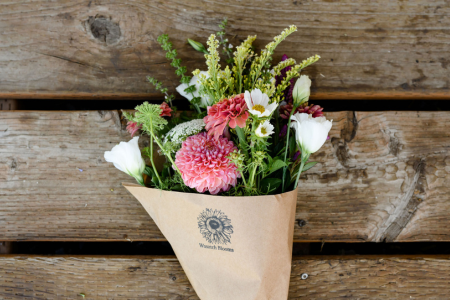
For flowers used for weddings, Niki aims for a 3X to 4X markup, depending on the season and types of flowers. “Spring flowers tend to have a higher price per stem. I might spend 80 cents to three dollars on a ranunculus corm, versus the cost of one zinnia seed. There’s just a higher investment to get those spring crops into the ground.”
Heather relies on two different calculations to build profitability. She adds 30 percent for overhead (web fees, credit card fees, and fuel); 30 percent owner compensation; and 50 percent for a profit margin. Together, this gives her the “true cost” by stem.
“Some crops emerge below my wholesale price, which is nice. And some are well above wholesale. That’s when I look at the market value and decide whether I can increase (a bunch price) by a few more dollars or whether what I’m growing simply won’t fall within any kind of profit margin, which means we need to cut it from our list.”
To illustrate the decision-making, she’s prioritized Oklahoma and Queen series zinnias over the Benary’s Giant series zinnias. “The Oklahoma and Queen zinnias are much more productive and they sell better. Similarly, sunflowers are definitely more profitable for me. My true cost is 75 cents per stem, but I can sell them for $1.50 to $2 per stem wholesale.”
9. Pay Yourself
Profitability begins with paying yourself first, the growers insist. At Flourish Flower Farm, Niki says she reinvested her first five years of income into the farm to build its infrastructure. “Now, I pay myself a set salary based on an 8 a.m. to 6 p.m. work week. My hourly wage may not be as high as when I had an off-farm job, but I have to remind myself that I also keep the profits of the business. And tax-wise, it benefits the business to have myself as a W2 employee.” She also pays two part-time seasonal crew members (who total 35 hours labor each week) between March through November.
10. Know That Bigger Isn’t Always Better
This insight is closely related to #3-Evaluate & Refine Sales Channels. As flower farms mature from year to year, it’s important to drill down on the most profitable use of resources and energy. More than ever, the idea of finding work-life balance also factors into decisions about growing a business. Take time at the end of each season to evaluate wins and losses, Niki says. “I get together with my staff and we discuss what did we grow too much of; what needs to be cut out. Even though we have records of every single stem that we’ve harvested, I like to get their impressions because they’re cutting and deadheading every day.”
Several years ago, Niki created a decision-making “matrix” to help her understand which channels were extra time-consuming or those she didn’t enjoy. She decided to reduce the number of weddings, freeing up time to offer on-farm workshops. She also ended the wholesale-to-florists program, except to just one regular flower shop customer who is eager to purchase everything Flourish grows. “I decided it actually made more sense, profit-wise and for my personal happiness, to shrink the size of Flourish Farm.”
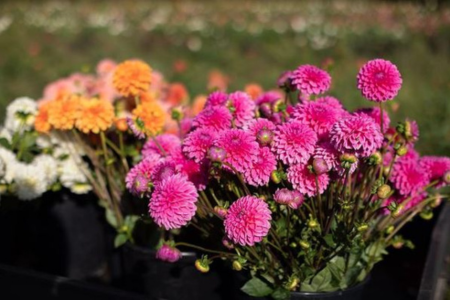
BONUS: Look For Hidden Sources of Revenue
Sometimes, the last-minute ideas pay off, and we love this example that Janis shared. Last October, when the first freeze was forecasted, Janis was looking at a field filled with gorgeous, end-of-season dahlias. “I knew I couldn’t save everything, so I posted to our farm’s Facebook account and let our followers know that they could come and pick dahlias for $30 per bucket. We had something like 50 cars here and we sold 100 buckets of flowers. People were so happy, bouncing out of our field with their buckets filled. In one afternoon, we ended up making $3,000 that we hadn’t planned on.”


